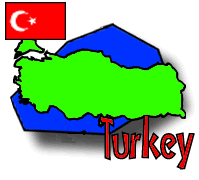Tech Fact of the Day: The bicycle!
Person of the Day: Mustafa Kemal (Atatürk)
Place of the Day: Alanya
Group Dispatch, February 16–18

Questions? Ask Anthony ![]() !
!
Return to Fast Facts
 |
 |
 |
 |
 |
|
Itinerary/ Journal |
Discussions |
About Turkey |
eDscape Projects |
Scrapbook |
|
|
|
|
|
|
Internet access while in Turkey was provided by Raksnet. |
Copyright 1997-2004 BikeAbout. All rights reserved.

